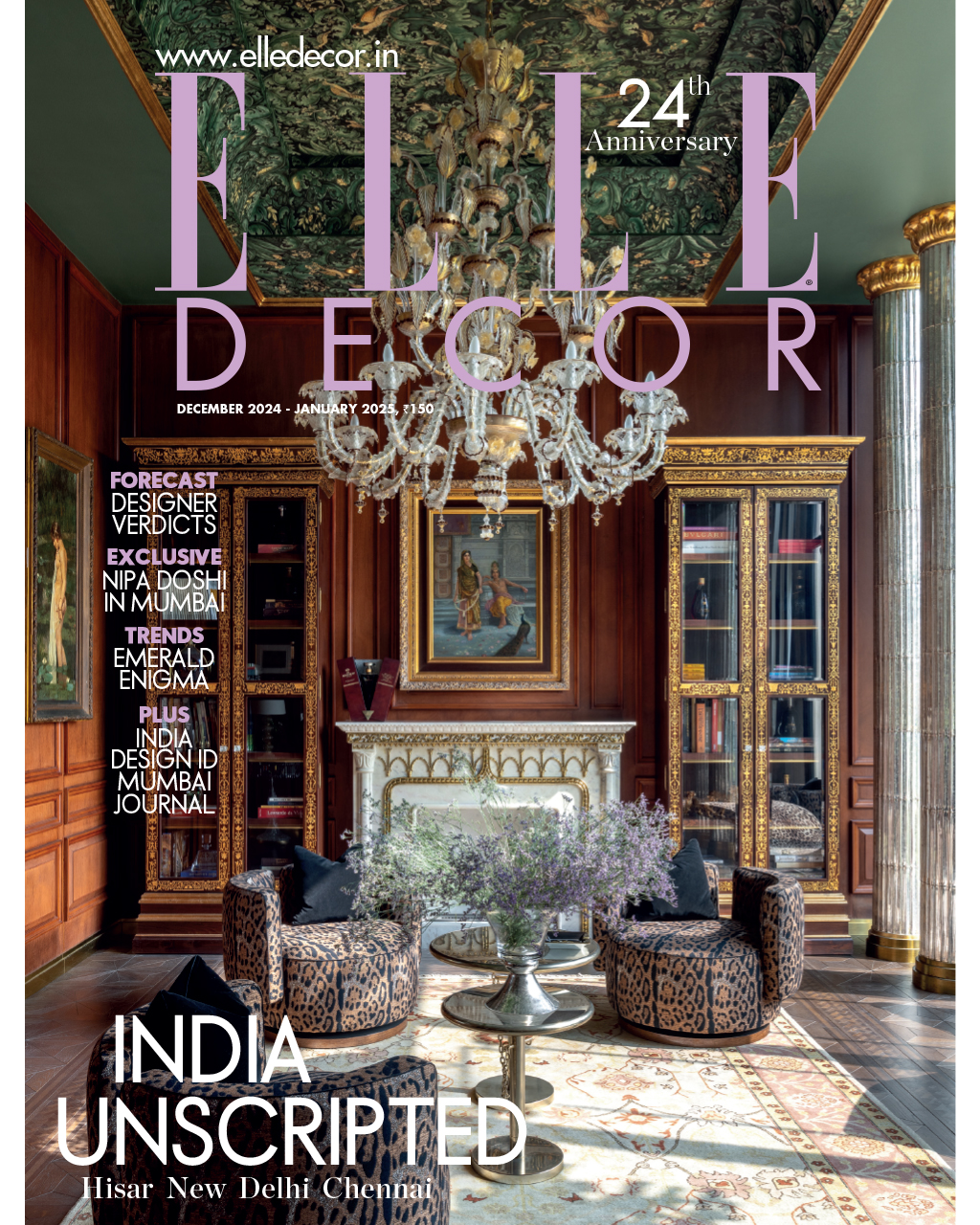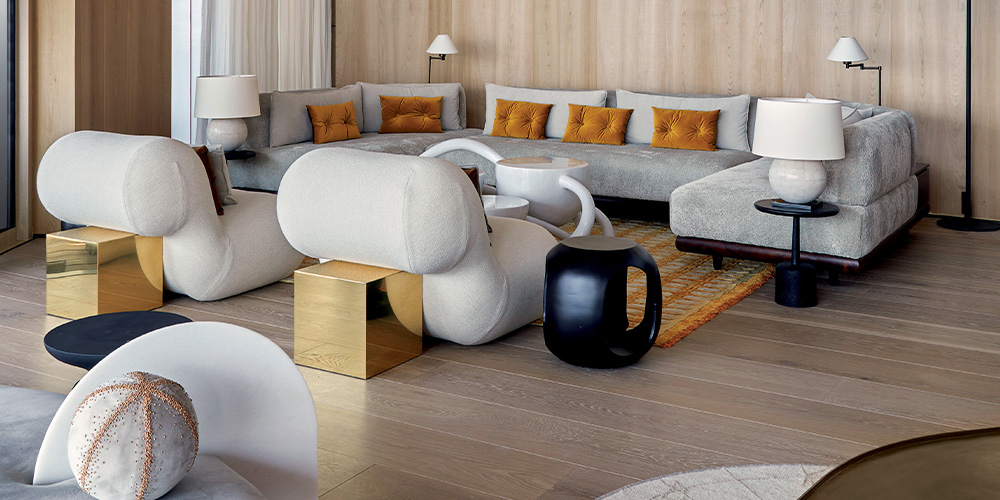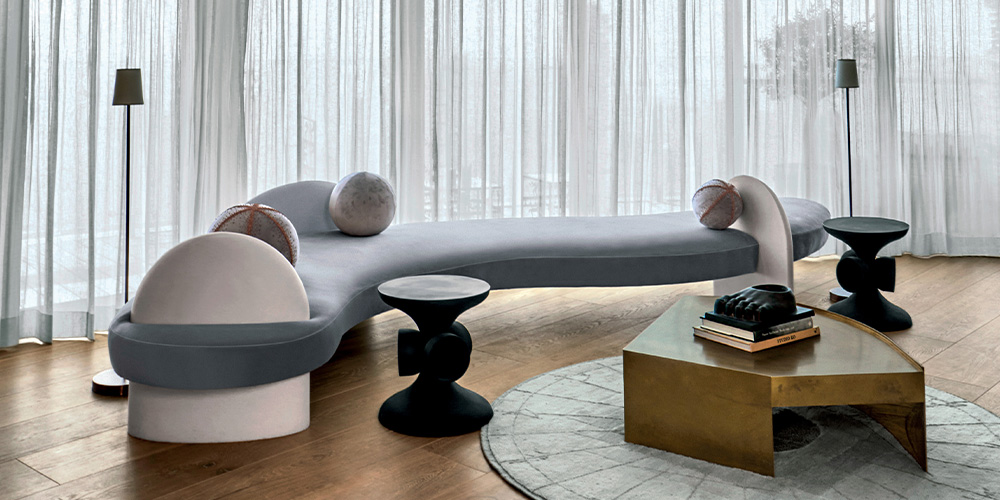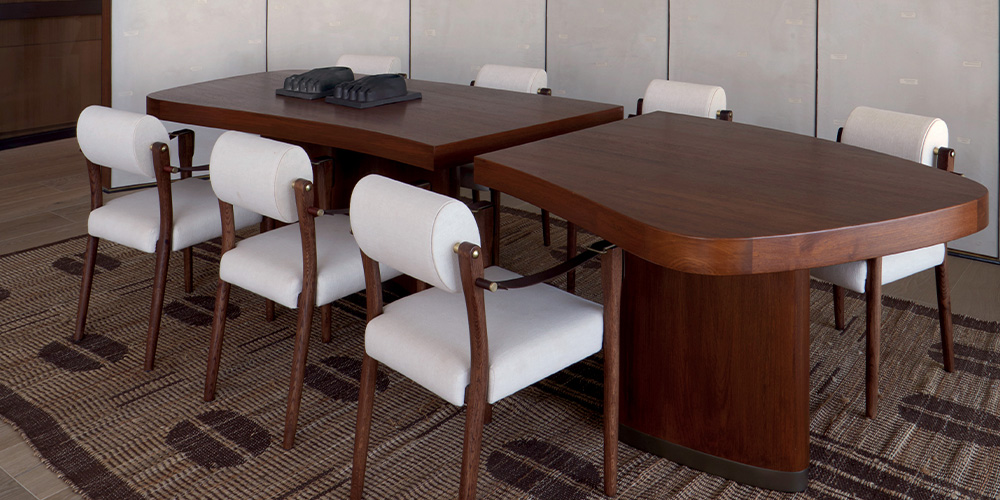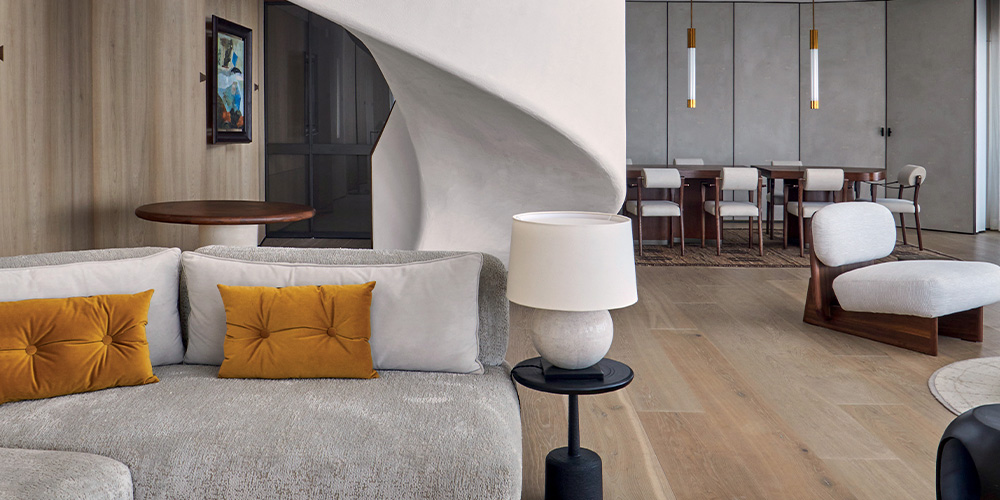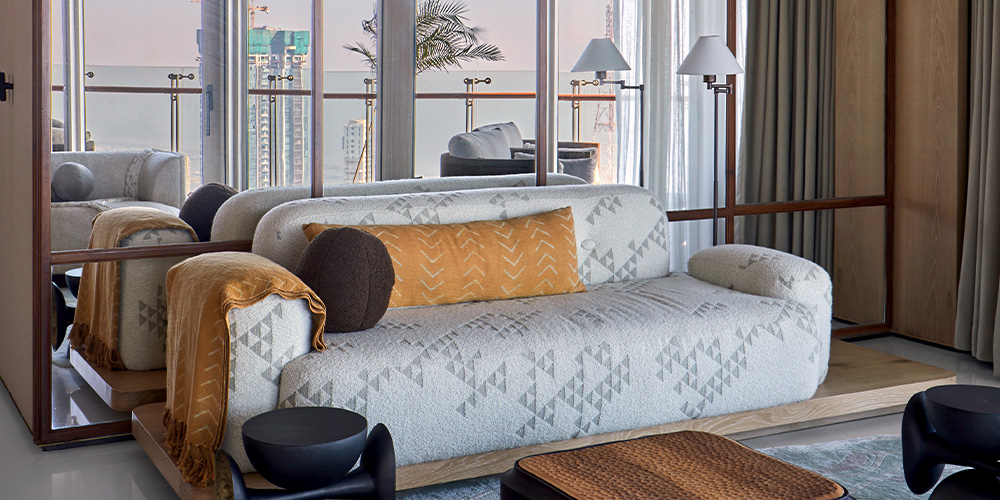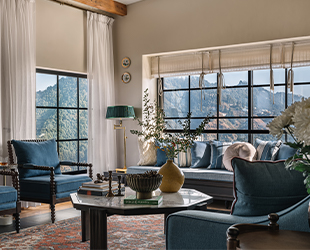Homes
A lightness of being reveals itself in this sky-high Mumbai duplex by Ashiesh Shah
JUL 8, 2024 | By Vaishnavi Nayel Talawadekar
In the past decade or so, the term ‘wabi-sabi’ has been discussed — and demonstrated — with wild abandon. A dining table with a dent? Wabi-sabi. A chair without a back? Wabi-sabi. A lopsided lamp? If it can’t be straightened, wabi-sabi.
As the term has gained currency, more out of convenience than a resolve for cultivation, the Japanese concept, which references a Weltanschauung of finding beauty in imperfections, has been distilled beyond recognition by many, barring a few. A proud member of that minority is architect-designer extraordinaire Ashiesh Shah, the powerhouse behind the eponymous Mumbai-based atelier, who has long been a standard-bearer of the increasingly du jour concept of minimalist design, reimagining Wabi-sabi as an aesthetic paragon equally inspired by the practical and the poetic.

Ashiesh’s latest masterstroke — a penthouse perched on the 58th and 59th floors of a Worli skyrise — is a compelling case in point. Designed as a luminous aerie for a family of four, the 5,000 sq ft nest is a dreamscape of sky tones and cloudlike elements that quietly slough off the stridency of the city.
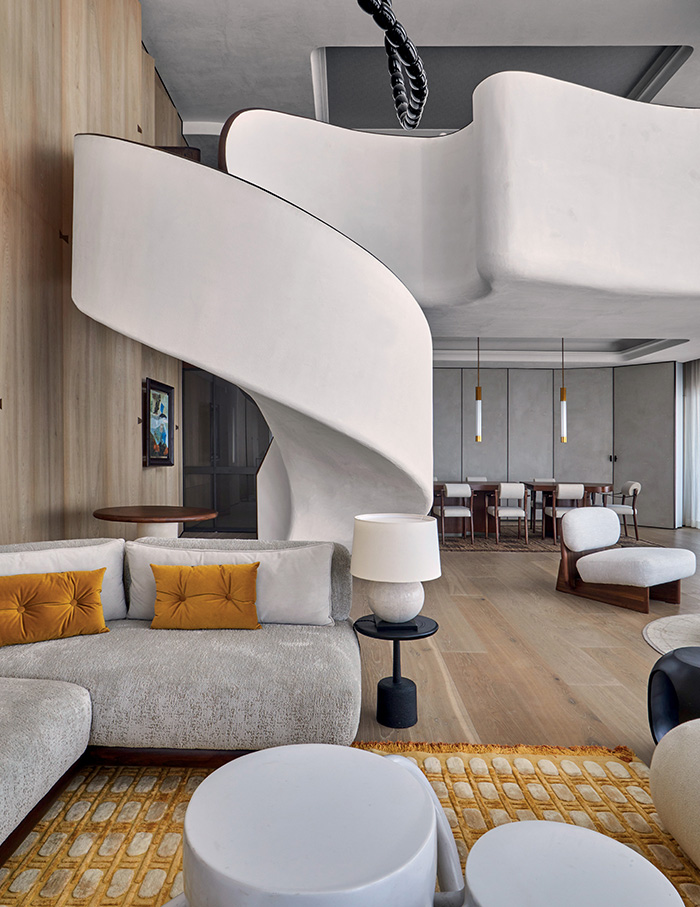
The designer employed a legerdemain that involved dividing the home into two functional levels: an upper double-height volume comprising bedrooms and a family room, and a lower storey for entertaining with living and dining areas, a kitchen and a home theatre.
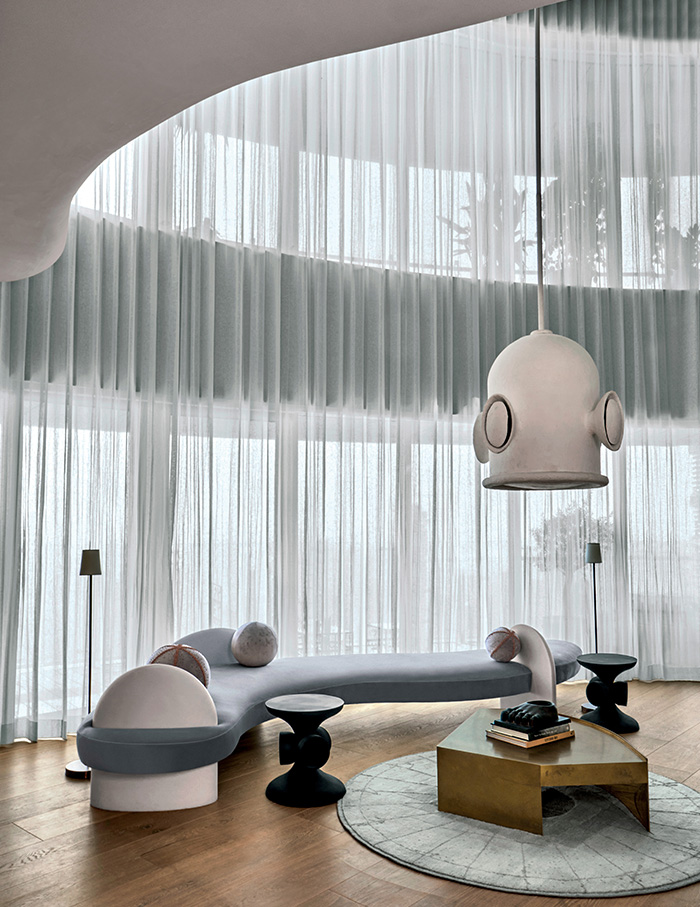
Across realms, Ashiesh conjured constellations of objects of his own design in handcrafted ensembles that embody shared aesthetic values while establishing connections to various styles, regions, eras and crafts. In short, he created an art gallery — if an art gallery was comfortable enough to live in. A sense of asymmetry, of deliberate imperfection, permeates each space, as evidenced in the living room, where a Chaar Chaand light — part-terrestrial, part-celestial hovers to one side, backgrounded by screen-like oakwood walls with walnut bowtie inlay.
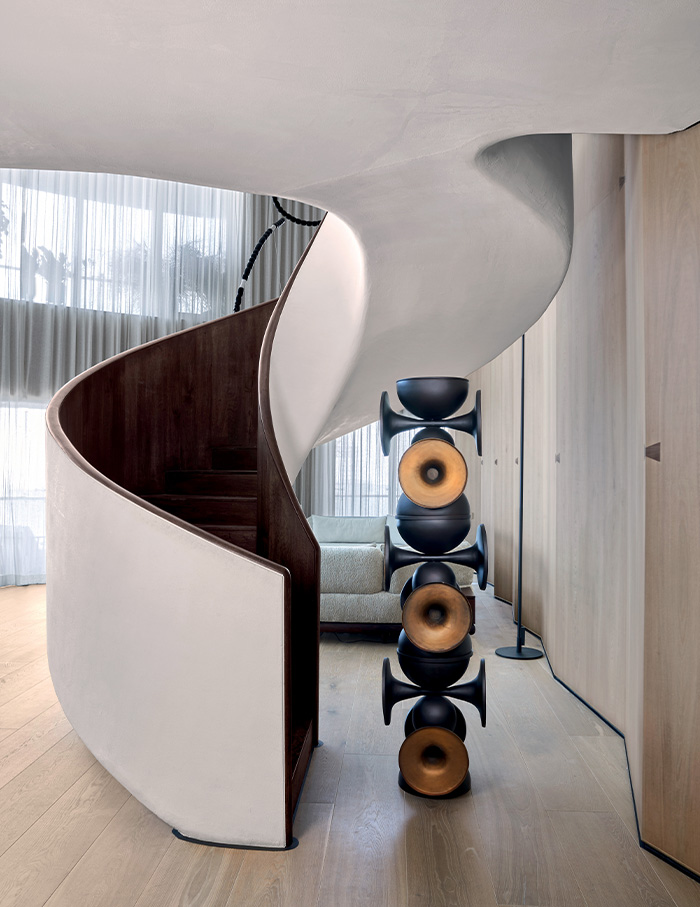
Of course, in Ashiesh’s eyes, it isn’t the luminaire or the walls or even the colossal volumes that deserve special attention, but rather the spiral staircase, which rises like a giant helix, culminating in a Juliet balcony that channels the tilting tide.
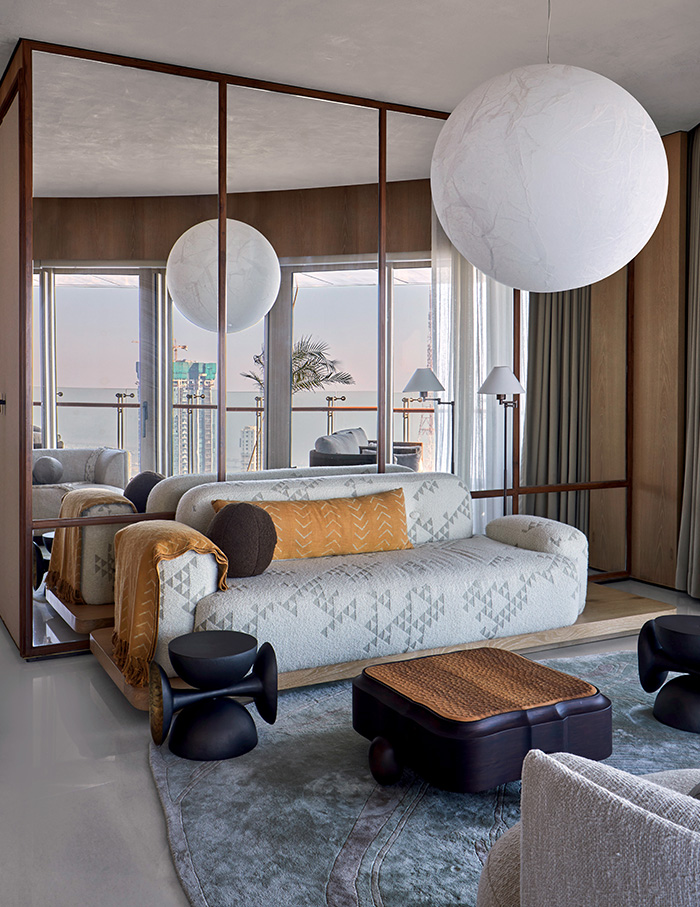
As he puts a finer point on the subject, there’s more to the staircase than meets the eye. For one, it’s a theatre of ebony and ivory, but equally, or perhaps more importantly, the upper railing is a sleight of hand, mimicking the profile of the nearby Channapatna light. Carving out the double-height volume was equally monumental, a process that Ashiesh describes as a remarkable triumph.
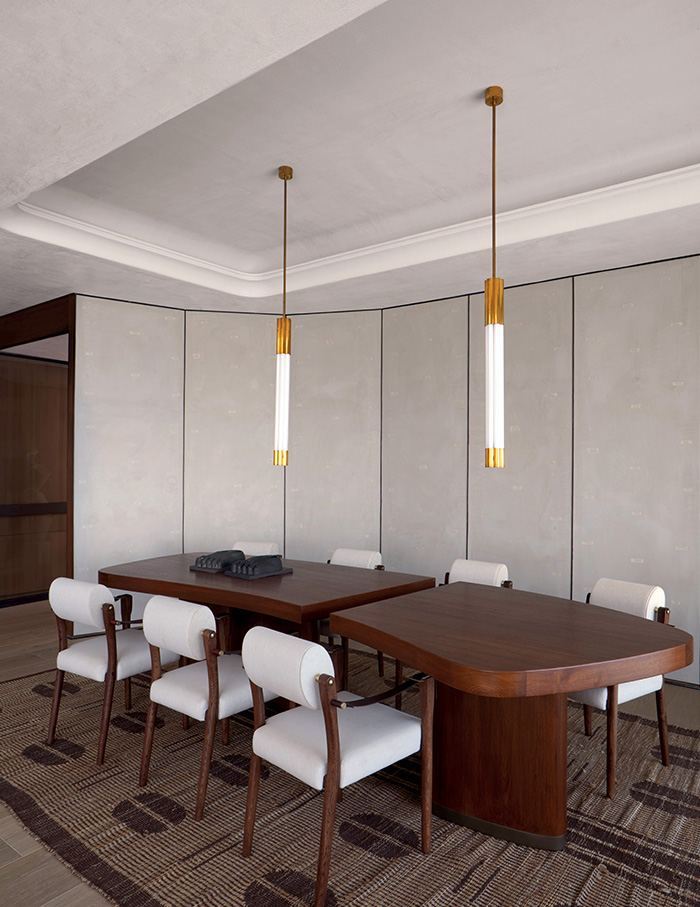
“Breaking down the entire structure, including the slab connecting the two floors, presented a challenge in determining the staircase placement,” recalls Ashiesh, who contemplated various configurations before magicking up a white envelope that appears to somehow levitate. There exist glimmers of wabi-sabi everywhere.
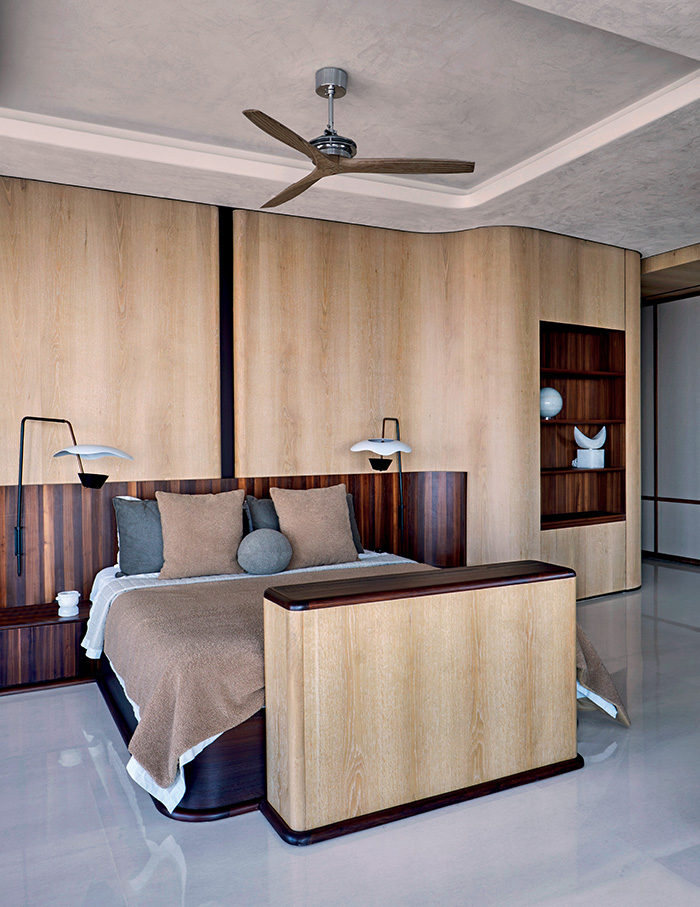
In the deliberate lightness of being; in the stambh by Atelier Ashiesh Shah, seemingly askew, in the foyer; in the Casegoods hanging light in the dining room. Nothing, yet everything, is perfect. The primary bedroom is another example. A tapestry of undulating curves, it pinnacles behind the bed, projecting the illusion of an otherworldly third eye. In each space, Ashiesh accentuated one vantage point to capture the ebb and flow of the city.
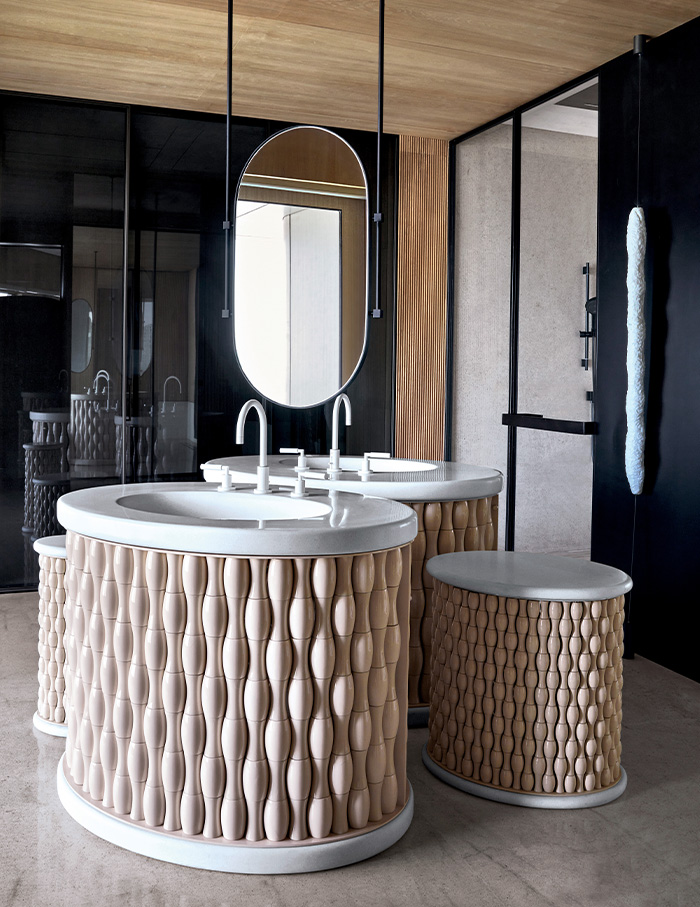
The sea link glittering to life at sundown. Planes taking off and landing. On some days, even a flock or two of Alexandrine parakeets fly home at the first stroke of dusk, just as the first drove of office-goers board their trains in a similar hope. The result is a view that channels a slowly turning kaleidoscope that at once complements and counterbalances the stillness within. Evidently, in this home, there’s beauty on either side of the threshold.
Now read: Whispers of Wabi Sabi: This Bengaluru home by House of Ruya echoes textured finesse of minimalism

